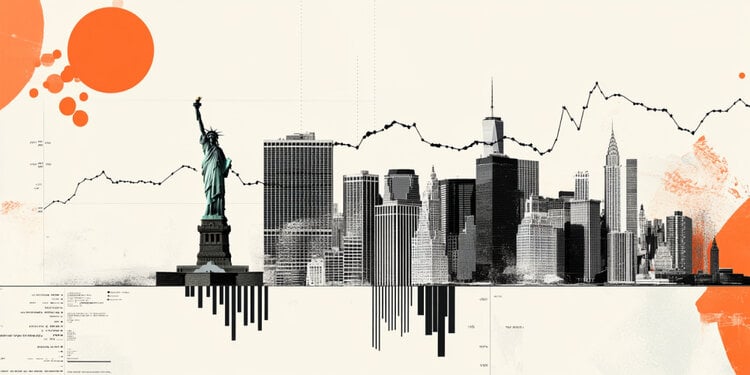The Dow Jones took a significant hit on Friday, dropping over 700 points. This slide reflects growing concerns among investors, triggered by key PCE inflation metrics inching upward. Adding to this downward pressure are persisting worries over tariffs and a decline in consumer confidence.
The Dow Jones Industrial Average (DJIA) saw a 1.75% fall, landing at 41,500. This drop was partly driven by a rise in core Personal Consumption Expenditure (PCE) inflation figures for February, which heightened fears of inflation in March. Consumers are increasingly pessimistic about economic conditions, not helped by the ongoing tariff disputes that continue to weigh on sentiment.
The core PCE Price Index’s inflation moved up to 2.8% year-over-year in February, signaling ongoing inflationary pressures. It’s becoming evident that it might take longer for the Federal Reserve to hit its 2% inflation target than previously expected. For nine months, the PCE inflation rate has stagnated above 2.6% year-over-year, maintaining its height since last June.
Recent data from the University of Michigan reflects a plummet in consumer sentiment, hitting the lowest point in over two years. The index fell to 57.0, below the anticipated steady figure of 57.9. Moreover, consumer inflation expectations for the next year increased to 5.0%, and the five-year expectations rose to 4.1%, exceeding forecasts of 3.9%. This pessimistic outlook suggests that investors may have underestimated how heavily the trade policies of the Trump administration, particularly the tariffs, weigh on consumers. Despite President Trump’s claims that the tariffs, due on April 2, will benefit the economy, worries mount that these measures may worsen economic conditions and drive inflation higher.
On Friday, President Trump reiterated his commitment to implementing these tariffs, dubbing April 2 as “Liberation Day.” These measures include a 25% tariff on vehicles not made in the U.S. and reciprocal tariffs on countries with protective measures against U.S. goods. Additional taxes will apply to imports like copper, microchips, and pharmaceuticals, and a 20% punitive tariff on nations purchasing Venezuelan crude oil is also planned.
In stock news, all major equity indices turned red this Friday. The Dow Jones plunged over 700 points to 41,500 while the S&P 500 slid down by 115 points, marking a 2% decrease for the day. The Nasdaq Composite, representing tech stocks, also dropped significantly, losing around 500 points, which equates to a 2.7% decline since the market opened that day.
Looking at the Dow’s price forecast, recent sell-offs have driven the index below its 200-day Exponential Moving Average (EMA), which is near the 42,000 level. This has stripped away gains the Dow made following its previous slump below 40,800. After a momentary recovery to around 42,800 earlier this week, momentum has shifted downward again, resulting in a 3% drop over three days. Without a resurgence in buying interest, the Dow appears set to test the crucial 41,000 level once more.
In regard to the economic landscape, the Core Personal Consumption Expenditures (PCE) Index is a key indicator, released monthly by the U.S. Bureau of Economic Analysis. It measures the price changes of goods and services consumed in America and is a preferred Federal Reserve metric for gauging inflation. The year-over-year figures compare current prices to those from the same month the previous year. By omitting volatile food and energy costs, the core reading offers a clearer picture of enduring price trends. A high reading usually bodes well for the U.S. dollar, while a low one tends to have the opposite effect. For more details, do explore additional resources.


















